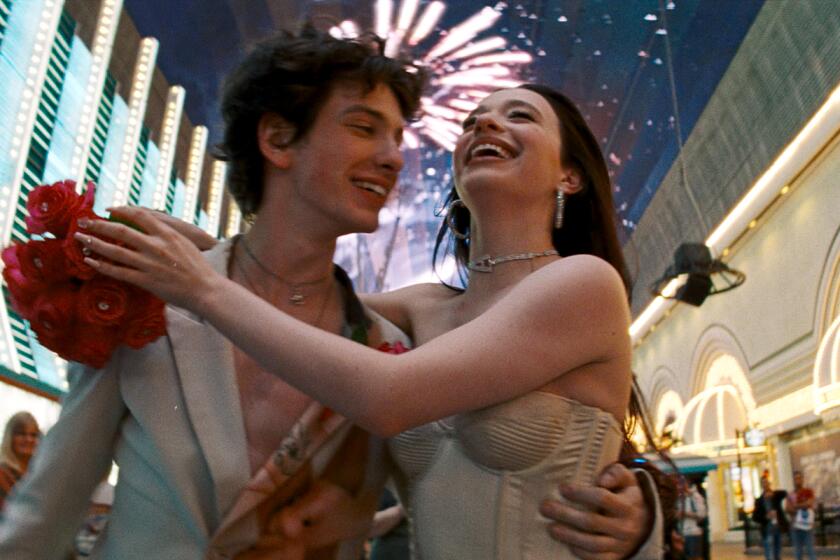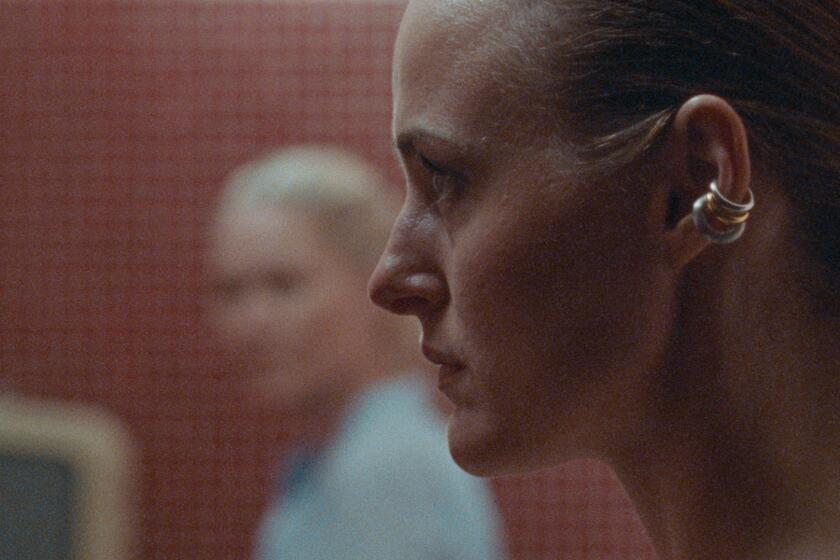Movie Critics Debate Its Merit as Passionately as Religious Leaders
- Share via
Martin Scorsese’s “The Last Temptation of Christ” has sparked as much debate among film critics as it has among the nation’s religious leaders.
Is the film an artful, courageous rendering of Nikos Kazantzakis’ 1955 novel that, at last, humanizes Jesus? Or another lumbering, awkward attempt to bring Jesus to the screen? The critics are divided--though most seem to agree the film is worth seeing.
For the record:
12:00 a.m. Aug. 13, 1988 For the Record
Los Angeles Times Saturday August 13, 1988 Home Edition Calendar Part 5 Page 8 Column 3 Entertainment Desk 1 inches; 18 words Type of Material: Correction
Movie critic Bob Thomas writes for the Associated Press, not United Press International, as reported in The Times on Friday.
Time magazine’s Richard Corliss says those “willing to accompany Scorsese on his dangerous ride through the Gospels may believe he has created his masterpiece.”
USA Today’s Mike Clark commended Scorsese for giving “us a flesh-and-blood savior in the first biblical movie of any real cinematic immediacy.”
But AP’s Bob Thomas called the film “at times moving, often overwrought, and at least 40 minutes too long.” And Rex Reed, co-host of “At the Movies,” called the film “a 20-ton turkey, boring and pretentious. It’s rare you find so much bad acting.”
Michael Healy, film critic for the L.A. Daily News, called the film a “richly beautiful, profound work of the human imagination functioning at its peak of capacities.”
But the evening before Healy’s review arrived on doorsteps, KABC-TV’s film critic, Gary Franklin, told his viewers the movie was “thoroughly boring.”
“It’s not a question of having enough security to control protests, but enough ushers to wake up the sleeping patrons,” Franklin added in an interview Wednesday. “I don’t think any one should be offended except the thinking Christians, Jews, Moslems and anyone else who shelled out $6 to see the thing.”
The Hollywood trade press split evenly on the film. Daily Variety’s Todd McCarthy said the film was “intensely acted and made with tremendous cinematic skill and resourcefulness.”
But the Hollywood Reporter’s Duane Byrge said that “all too often Jesus comes across as sounding like someone who’s been trapped for 40 years in a Grateful Dead convoy.”
Despite the admittedly modern flavor of Scorsese’s film, the Chicago Tribune’s Gene Siskel, who appears on a nationally syndicated TV show with fellow critic Roger Ebert, said the film achieved the goal of any religious film by prompting him to examine his own life.
“When I see a religious figure like Jesus having doubts about himself, about living the proper life,” Siskel said in an interview Thursday, “it makes me comfortable with similar feelings of self-doubt, guilt and questions about my value system. All of these things went through my mind as I watched this film.”
Siskel added that Christian groups should welcome the film as a recruitment vehicle. “To be able to identify with Jesus is a remarkable achievement (by the film makers),” Siskel said.
Other critics came down somewhere in the middle in their assessments of the film. Newsweek’s David Ansen said “Scorsese’s broodingly personal film is part folly, part spellbinder.”
Joel Siegel of ABC’s “Good Morning, America” noted that the film, with a production price tag of $6.5 million, “was made for one third the normal Hollywood budget. Scorsese has done some excellent film making to compensate for that.
“It is not a great film,” Siegel added. “It has serious flaws. But it is a good film and deeply felt and ultimately faith affirming. Scorsese has filled his film with images that won’t easily be forgotten. You might despise them but you won’t forget them.”
Newsday’s Mike McGrady gave the film 3 1/2 stars, out of a possible four. “It may be Scorsese’s most courageous film and it is technically superb,” McGrady told his New York readers, “but it is slow and and at times heavy going.”
Critics from southern cities such as Atlanta and Dallas hadn’t seen the film yet and complained that Universal Pictures was vague about its release plans there. The movie is expected to generate widespread protests from fundamentalist groups throughout the Bible Belt. (In addition to Los Angeles and New York, the film is expected to open today in San Francisco, Toronto, Montreal, Minneapolis, Seattle, Chicago and Washington.)
The scene that is drawing the bulk of protests from religious groups is a dream sequence in which Jesus fantasizes about coming down from his cross, making love to Mary Magdalene and eventually leading his life as a normal man.
That same scene, however, has drawn praise from critics. The Wall Street Journal’s Julie Salamon, for example, said the Crucifixion scene “couldn’t be more masterful, or heartbreaking.”
The film’s visuals earned high marks from a number of critics, even those--such as the Hollywood Reporter’s Byrge--who panned the film. “Michael Ballhaus’ sharp-hued photography is piercingly revealing, while John Beard’s rich and frugal production design is painstakingly telling,” Byrge wrote.
“Scorsese and (writer Paul) Schrader have made a courageous film that people of all religions or no religion should be able to watch with identical fascination,” wrote Jay Scott of the Toronto Globe and Mail.
More to Read
Only good movies
Get the Indie Focus newsletter, Mark Olsen's weekly guide to the world of cinema.
You may occasionally receive promotional content from the Los Angeles Times.









